Item ID
(old ID)
|
Topic |
Learning Goals. By the end of this section, you will be able to ... |
Info / Photo |
| 1. Intro |
nfb 1.1
(fb1) |
Significant past fires |
List 3 of the major wildfires that affected western Canada since year 2000, and describe what weather conditions they had in common (if any).
Why are years 2003, 2017, 2018, 2021 and 2023 are considered to be significant wildfire seasons in BC? |
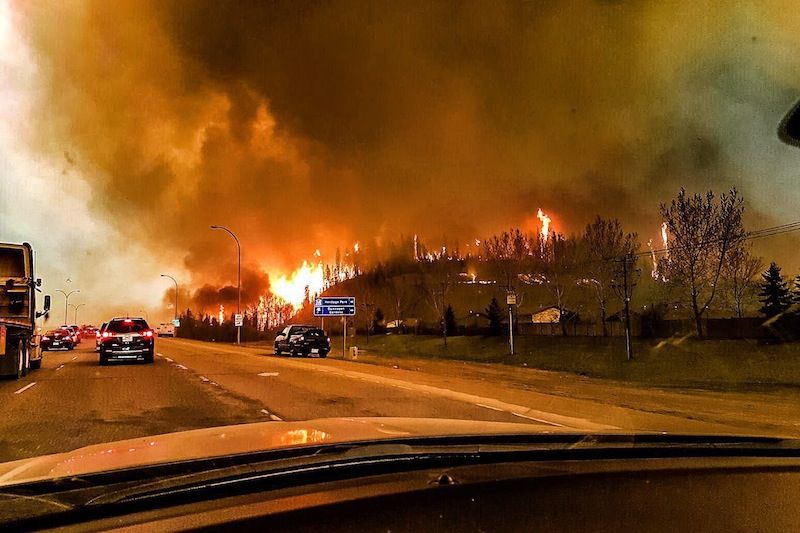 |
nfb 1.2
(fb29) |
Types of Burns |
Compare and contrast different types of burns:
- Wildfire (aka Forest Fire, Bushfire)
- Controlled Burn, (includes prescribed, cultural, backfire, etc.)
- Prescribed Burn, also see AB , IAWF , Parks Canada ,
- Cultural Burning, also see BC2024 video , BC , Parks Canada , Narwahl ,
- Backfire, also see NT , ABC , KCRA , WFCA ,
- Experimental Burn, also see ArcGIS , NT , AB ,
|
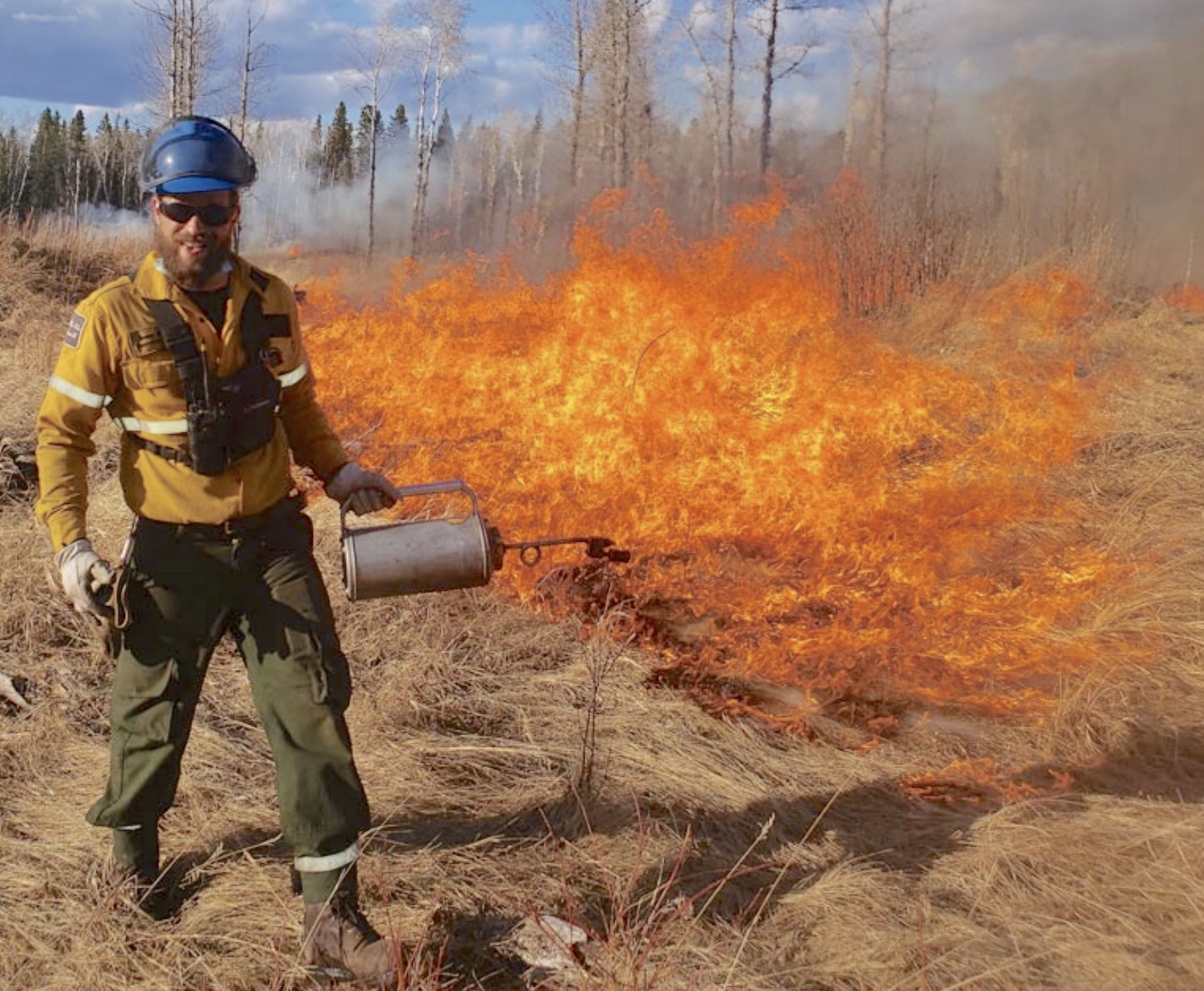 |
| nfb 1.3 |
Indigenous Ways |
Discuss historical interactions between western colonizers and Indigeneous peoples in N. America. Explain how Indigenous wildland fire management improves forest ecosystems and reduces the threat of extremely intense wildfires. Appreciate the heritage of earlier peoples on Canadian lands, and state the name of the First Nation peoples on whose land UBC sits. Explain why wildfires are becoming more severe compared to 100 years ago. :
Resources: Read the UBC Land Acknowledgement. See how past policy on fire suppression relates to increased fire danger today View the "Returning Fire to the Land" video. Skim the list of references in the Indigenous section of our course bibliography . See presentation by Liam Buchart ( slides , video (98MB) ). |
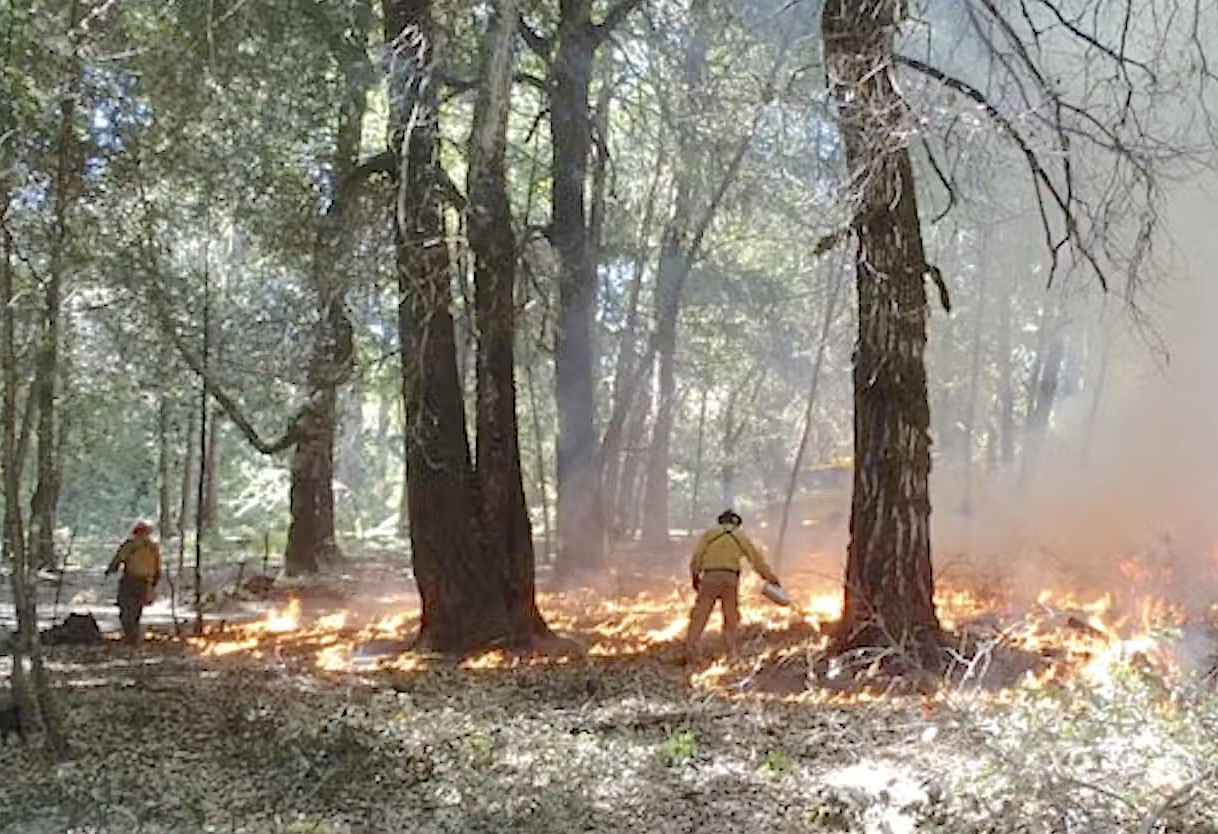 |
nfb 1.4
(fb28) |
WUI |
Explain what the Wildland Urban Interface (WUI) is, describe the 3 exposure conditions that cause the problem (WUI Cascadia video by Michael Gollner 2021). |
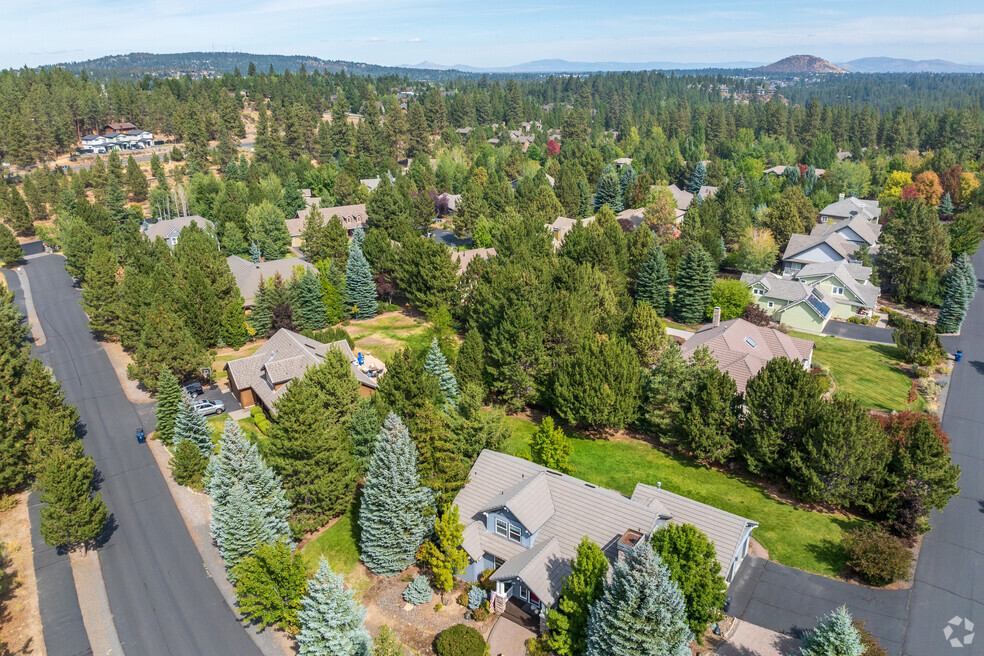 |
| nfb 1.5 |
FireSmart |
Take appropriate action to make your home and neighborhood safer from wildfires.
BC FireSmart ; Cal Fire Wildfire Action Plan ; Alberta FireSmart ;
|
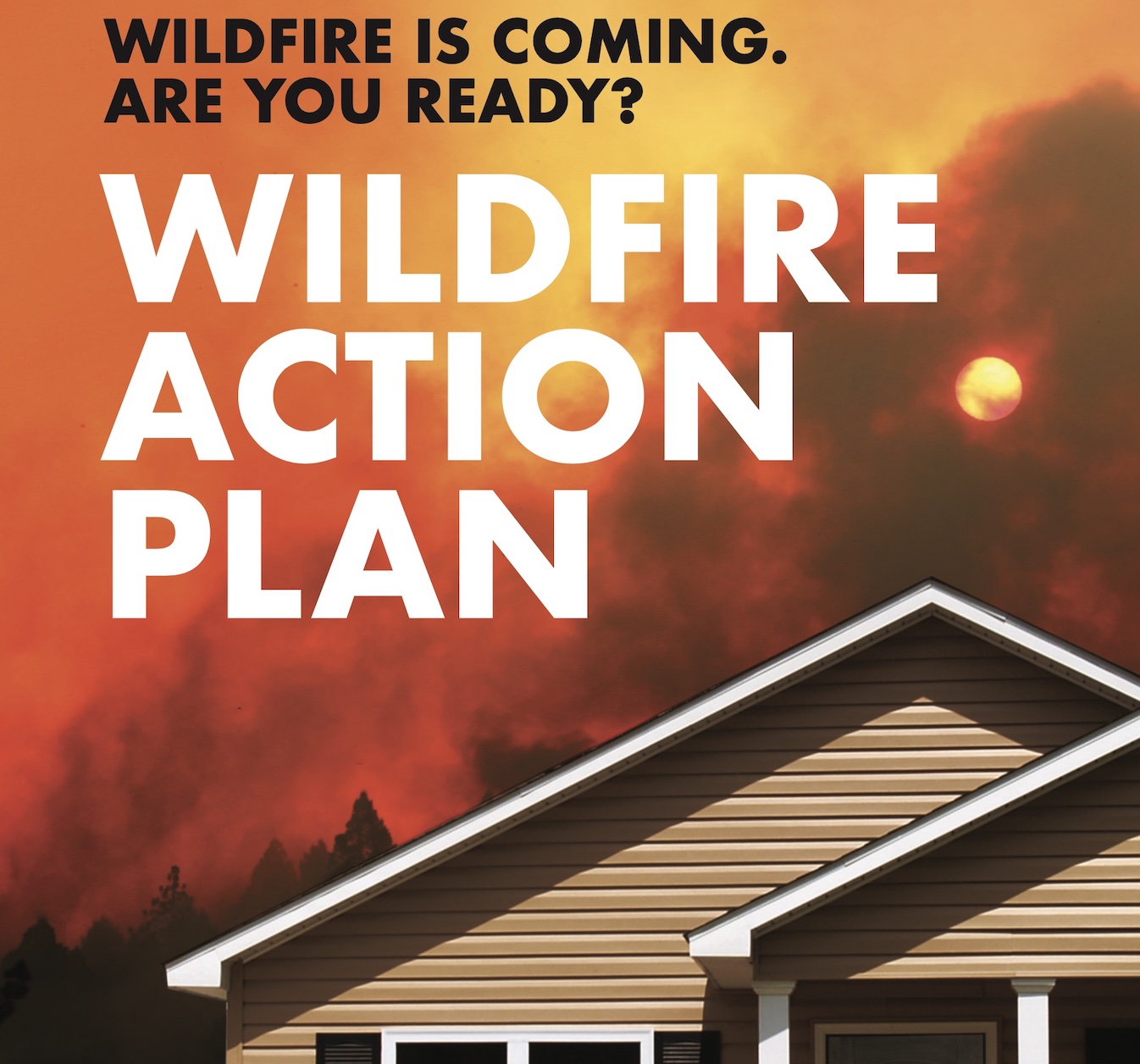 |
nfb 1.6
(fb0) |
Glossary, Symbols, etc. |
Not a Learning Goal, but handy references regarding the jargon and symbols used for wildfires.
BC Wildfire Glossary.
Symbols from wikifire.
NT Common Wildfire Terms .
CIFFC Wildland Fire Glossary.
Nova Scotia DNRR Glossary.
Wikipedia Glossary of Wildfire Terms. |
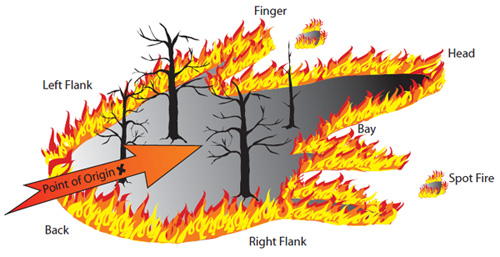 |
| 2. Resources |
nfb 2.1
(fb23) |
FIRMS |
Use NASA's Fire Information for Resource Management System (FIRMS) to get near-real time (and historic) fire hotspot info from satellites. Explain its utility and its limitations. Explain how active fires are detected using thermal anomalies observed by satellite. |
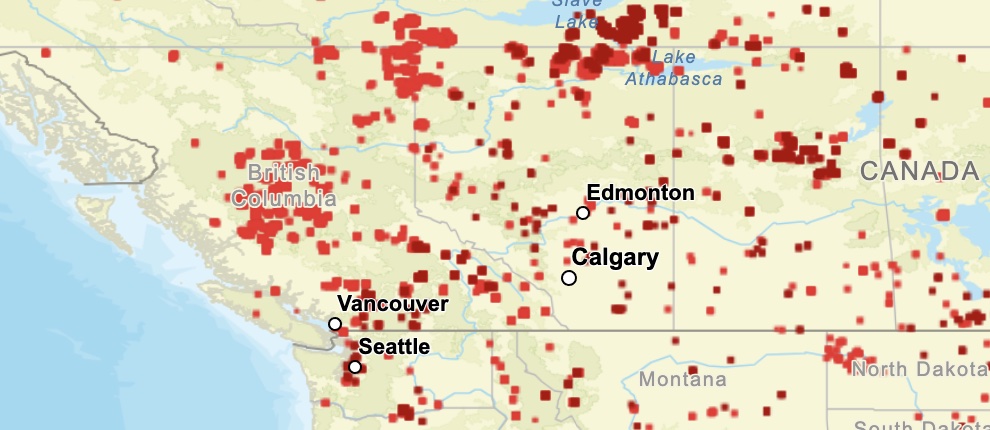 |
nfb 2.2
(fb24) |
GWIS |
Describe what fire-related products are available from the Global Wildfire Information System (GWIS). Explain how to use GWIS maps and charts. |
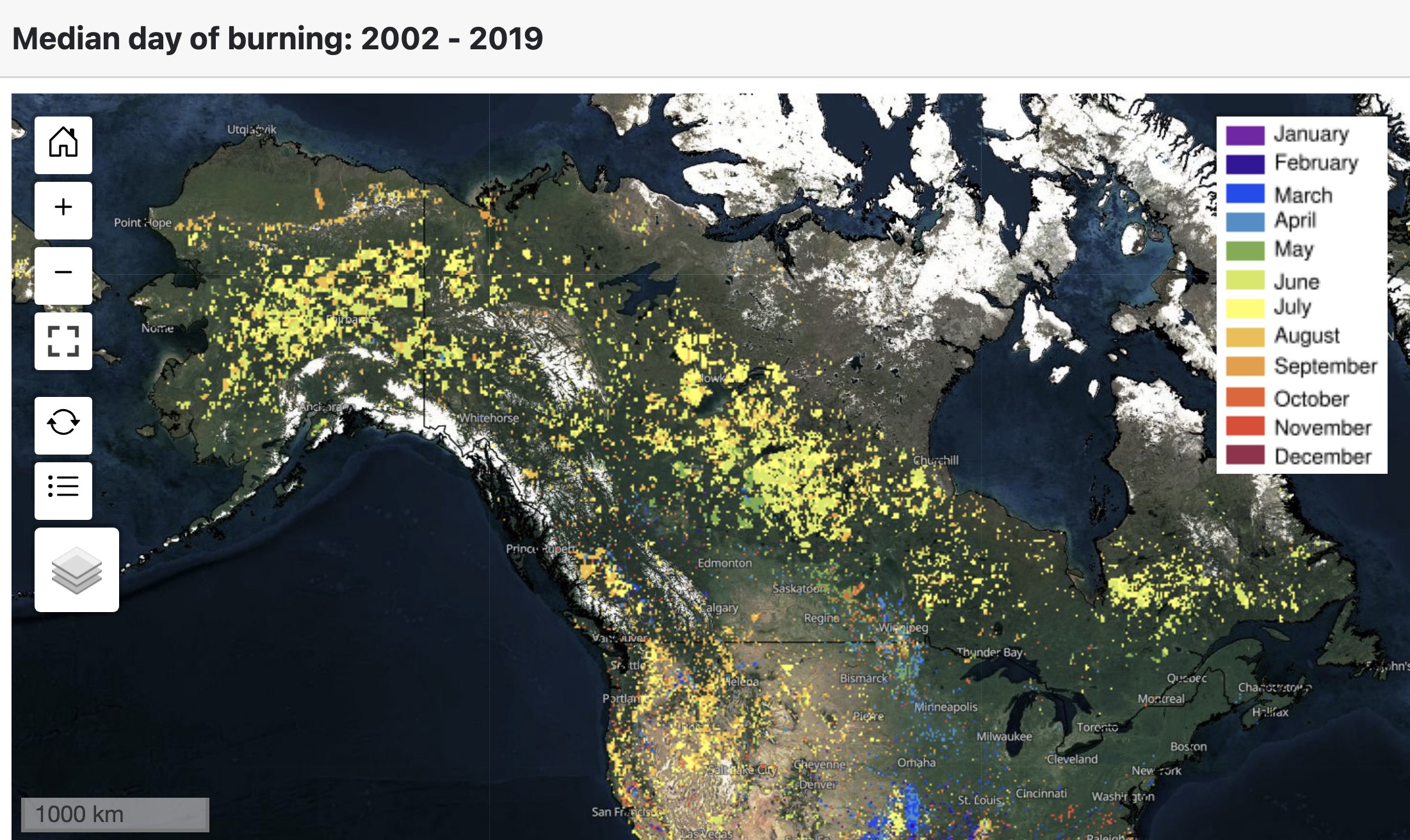 |
nfb 2.3
(fb27) |
CIFFC |
Describe what information is available from the Canadian Interagency Forest Fire Centre (CIFFC), and particularly from its Dashboard. |
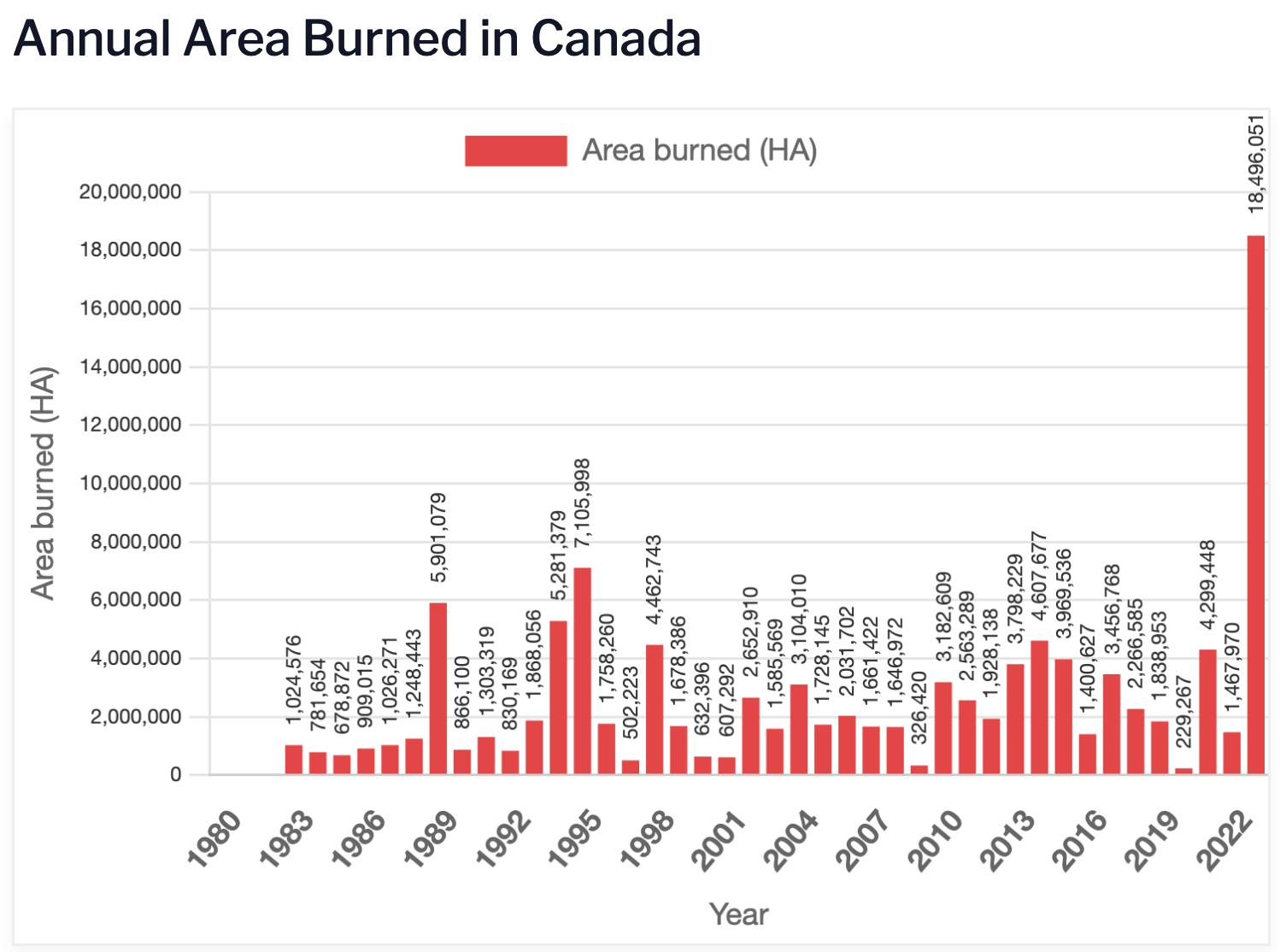 |
nfb 2.4
(fb31) |
NIFC |
Access the US National Interagency Fire Center (NIFC), to find current fire information, statistics about current and historical wildfires, and news about NIFC and interagency efforts.
|
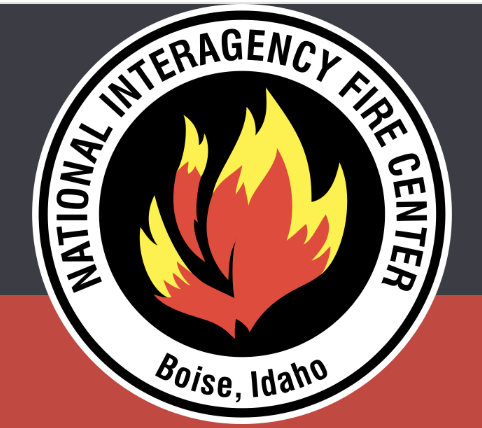 |
| nfb 2.5 |
BlueSky |
Utilize the UBC BlueSky system to anticipate smoke dispersion from wildfires and planned burns. Access fire-weather info for N. America. |
 |
| nfb 2.6 |
Swiss ETH Fire Weather Indices WIKI. |
Access the equations used to calculate a wide variety of fire weather indices. |
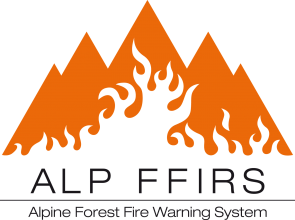 |
| nfb 2.7 |
NWCG |
Access resources of the US National Wildfire Coordinating Group (NWCG). Access their online Wildland Fire Learnin Portal. |
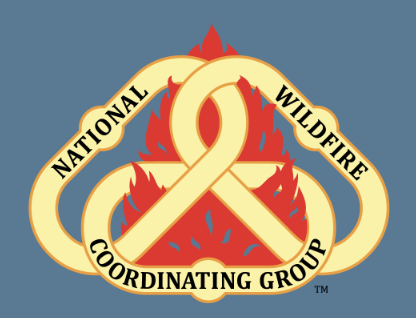 |
| nfb 2.8 |
IAWF |
Be aware of magazines, journals, and conferences organized by the International Association of Wildland Fire (IAWF) |
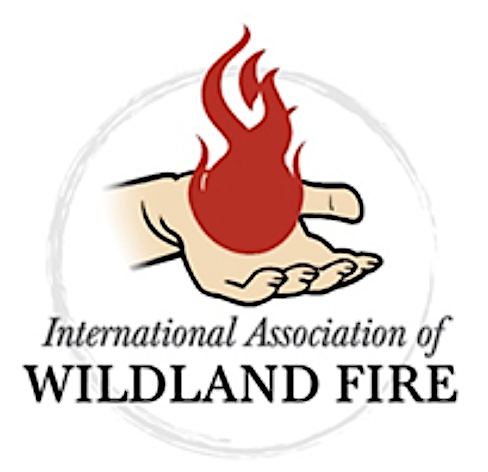 |
| nfb 2.9 |
Wildfire Today |
Access news and current info about wildfires from the online Wildfire Today magazine. |
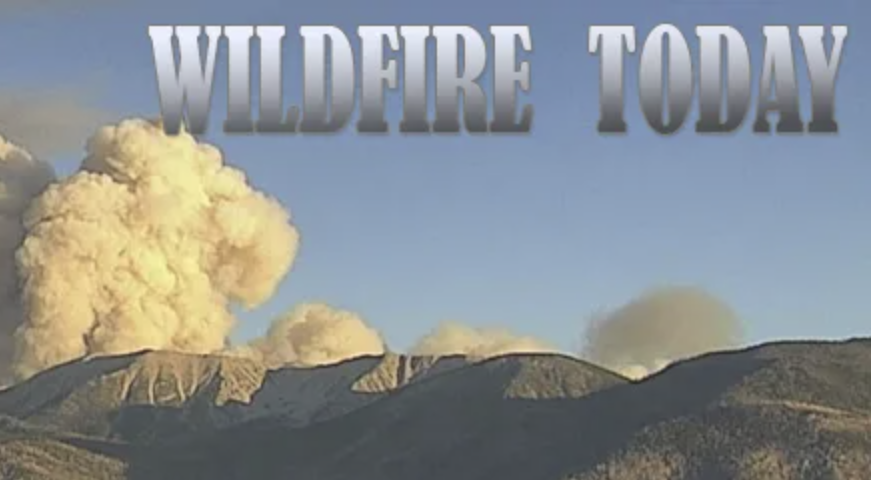 |
| nfb 2.10 |
Canada Wildfire |
Access info and online newsletters from the U. of Alberta's Canada Wildfire organization. |
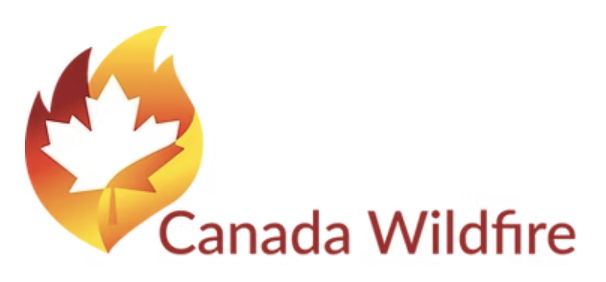 |
| 3. Fire & Fuel |
nfb 3.1
(fb2) |
Wildfire triangles |
Explain why fires need fuel, oxygen and ignition/heat. Also explain the roles of season, weather, and topography in fire behavior. NWT has a good overview. |
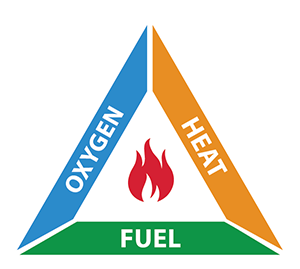  |
nfb 3.2
(fb3) |
Fire-behavior ranking |
For different-intensity fires, explain how to classify them into ranks, and describe how they are fought. Also, estimate ranks based on fire appearance and behavior. |
 |
nfb 3.3
(fb4) |
Forest maps & layers |
Locate on a map the main ecological zones and forest types, and describe the layers of deep fuels (e.g., peat), duff, surface, understory, and crown for temperate and boreal forests. |
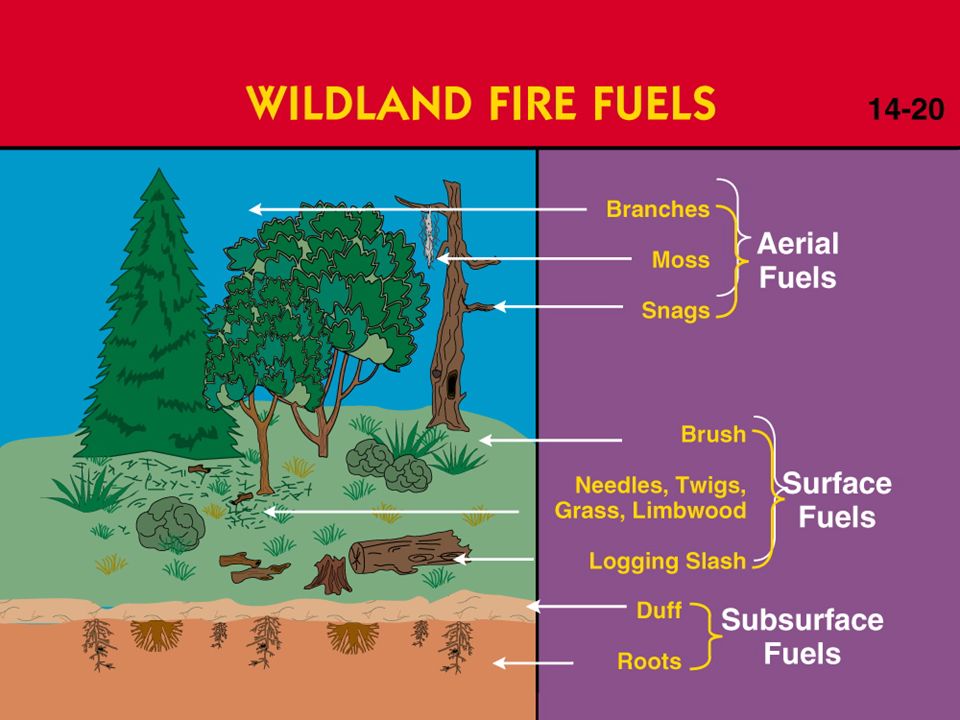 |
nfb 3.4
(fb6) |
Fuel characteristics |
Explain why fuel (e.g., tree) type, amount, availability, arrangement, quantity, spacing, diameter, and moisture are important in classifying potential fire behavior. Consider additional aspects of forest structure. Skim the NWCG web page on fuels. See how fuel errors cause errors in fire spread. Explain how downed trees killed by mountain pine beetles 15 years ago can exacerbate the fire hazard today. |
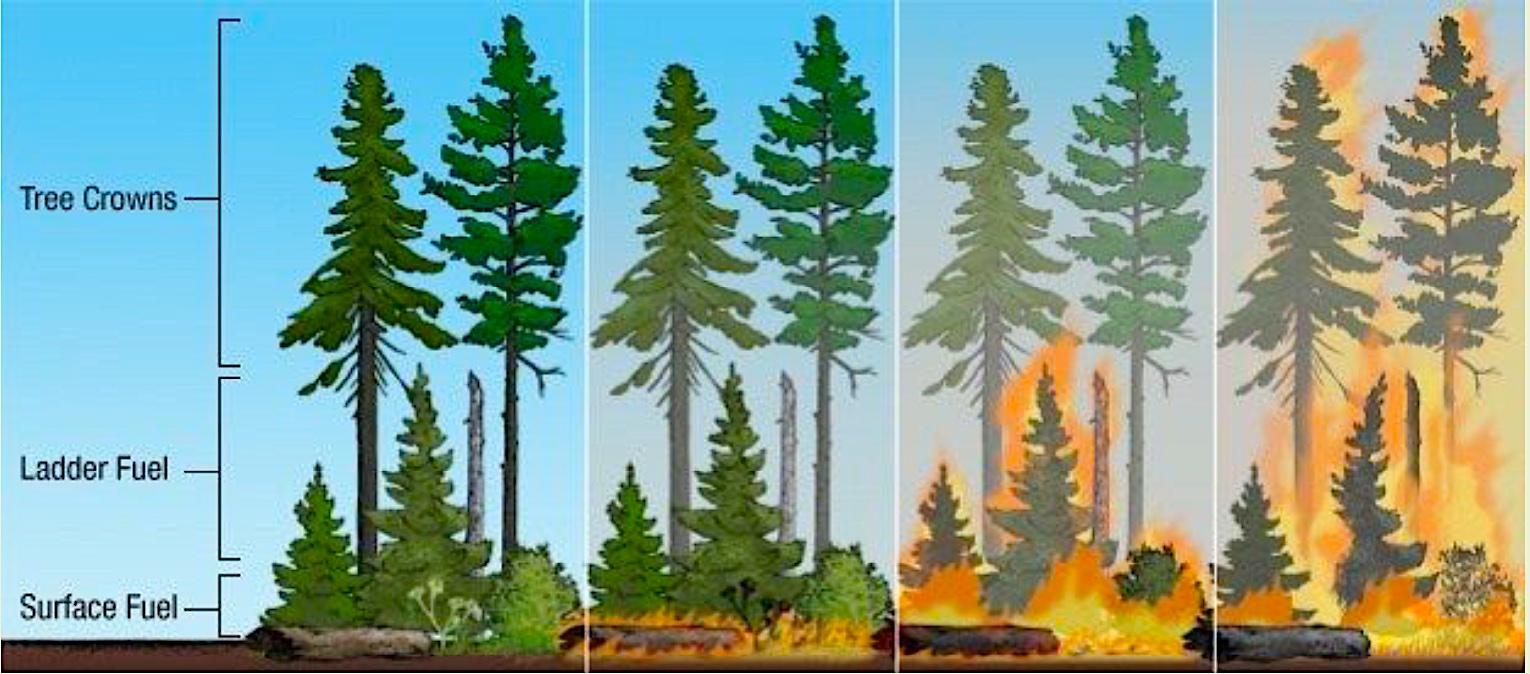 |
nfb 3.5
(fb8) |
Moisture content of fuels |
Explain the meaning of fuel moisture content, what range of values it can have, how it responds to atmospheric relative humidity** and other weather variables, and what critical value is needed for combustion. BC Wildfire measurement of fuel moisture. |
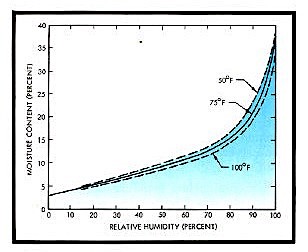 |
| 4. Weather vs. Terrain |
nfb 4.1
(fb12) |
Fire weather metrics - Part 1 |
Explain how the following variables affect wildfires: temperature, moisture (relative humidity, rain, snow), wind (speed, direction, angle relative to slope), and lightning. [Although tailored for the US Fire Danger system, the US National Park Service has an excellent overview of most of these factors.] Very short video of fire/smoke in Banff Park with upslope anabatic winds (0:15). |
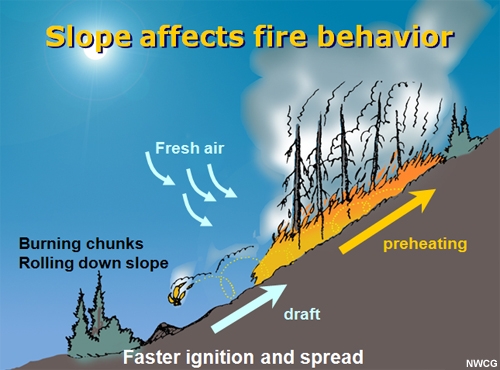 |
nfb 4.2
(fb13) |
Fire weather metrics - Part 2 |
Explain how wildfires are affected by insolation, and how insolation varies by hour of day, day of year, and shading by terrain, clouds, and smoke. (See J. Coen 2003 Wildfire Weather, p2586-2596 part 1 and part 2 in Encyclopedia of Atmospheric Sciences.) |
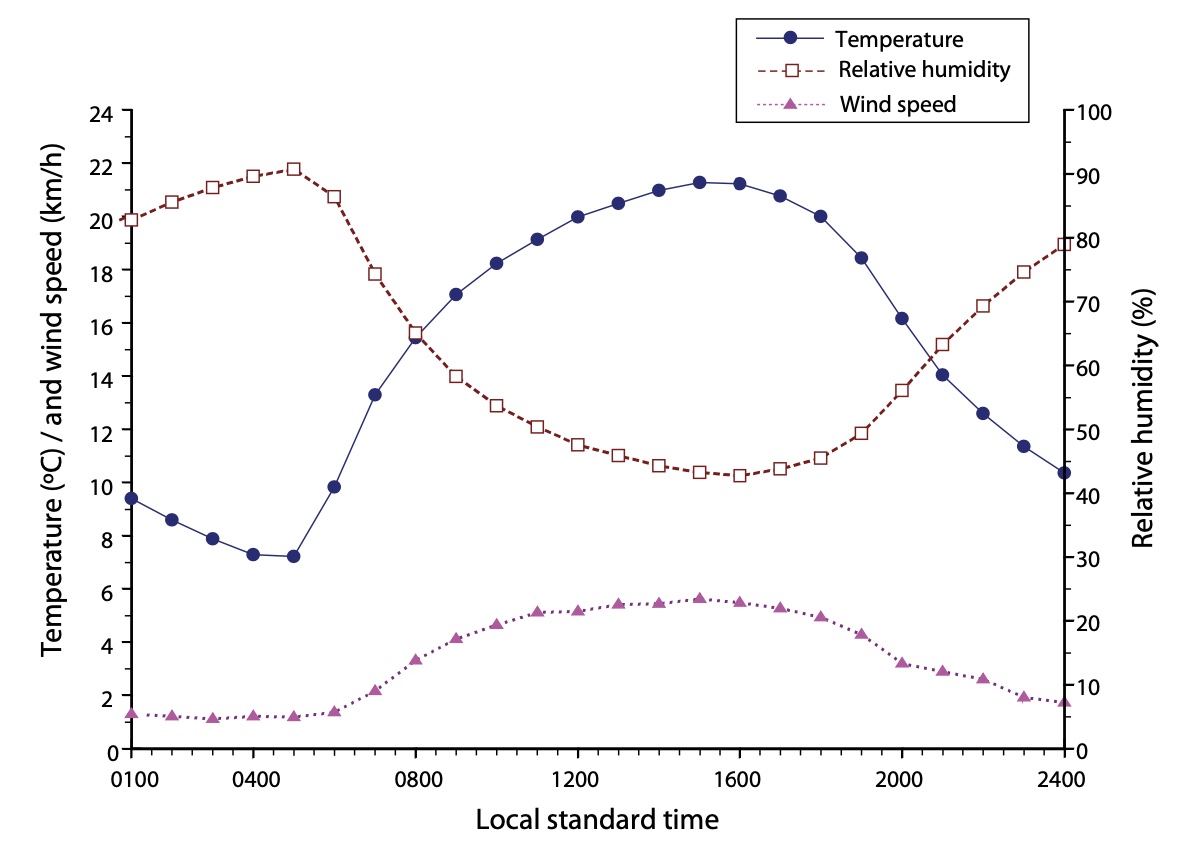 |
| nfb 4.3 |
Slope Aspect |
Relate the "aspect" (the compass direction of the downslope vector) of the slope to the weather as a function of time of day. NW Fire Science ; NWGC - Training (skip to the portion on Aspect) ; |
 |
| 5. Antecedent Conditions & Ignition |
nfb 5.1
(fb9) |
Precursor / Antecedent Conditions |
Explain why conditions such as drought in the preceeding year, months, and days can affect current fire conditions. For example, see BC Wildfire's discussion of the exceptional 2023 fire season. Also see discussions for other years:
2024 , |
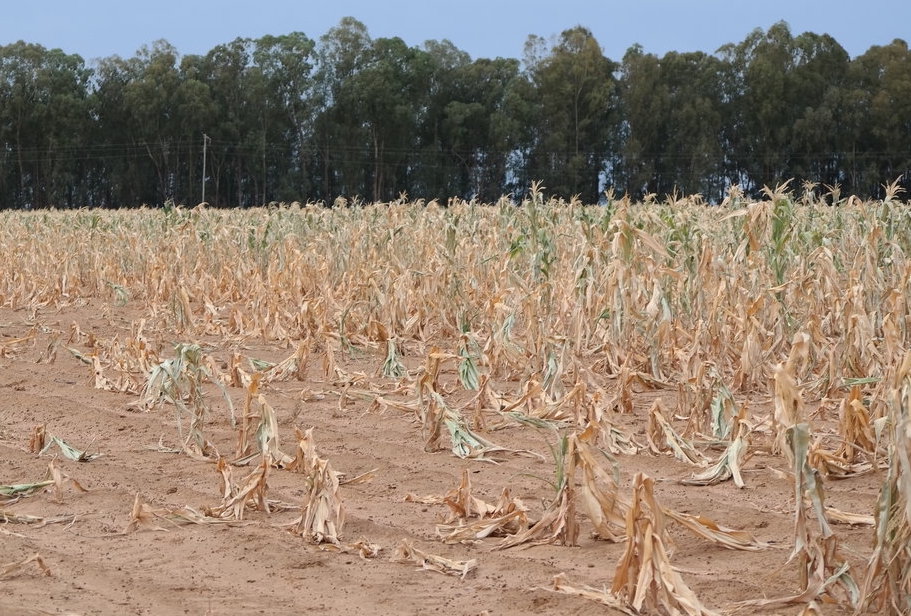 |
nfb 5.2
(fb26) |
Spring Dip |
Explain the causes and timing of the "spring dip" increase in fire potential in Canada. |
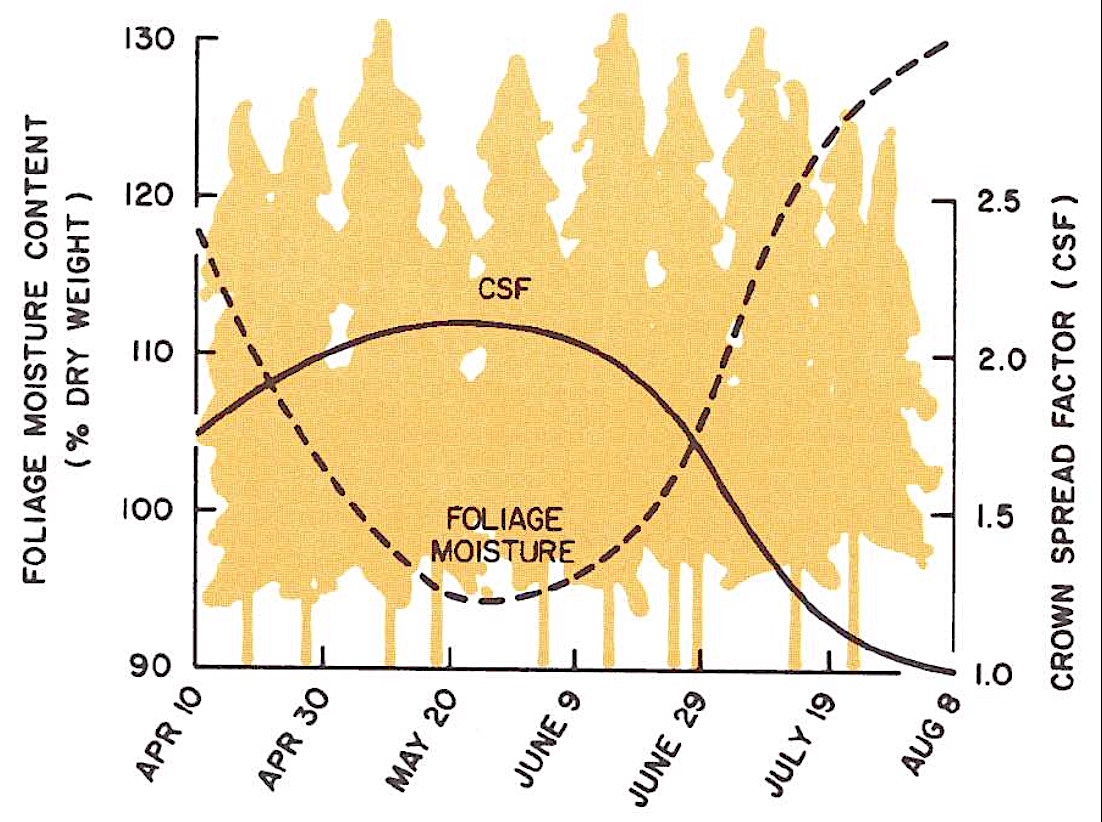 |
nfb 5.3
(fb7) |
Ignition & Lightning |
Explain what is needed for wildfires to ignite, and compare natural vs. human sources of ignition. Access and utilize lightning detection networks and lightning forecast sites. Describe temporal and spatial patterns of lightning-ignited wildfires in W. Canada. |
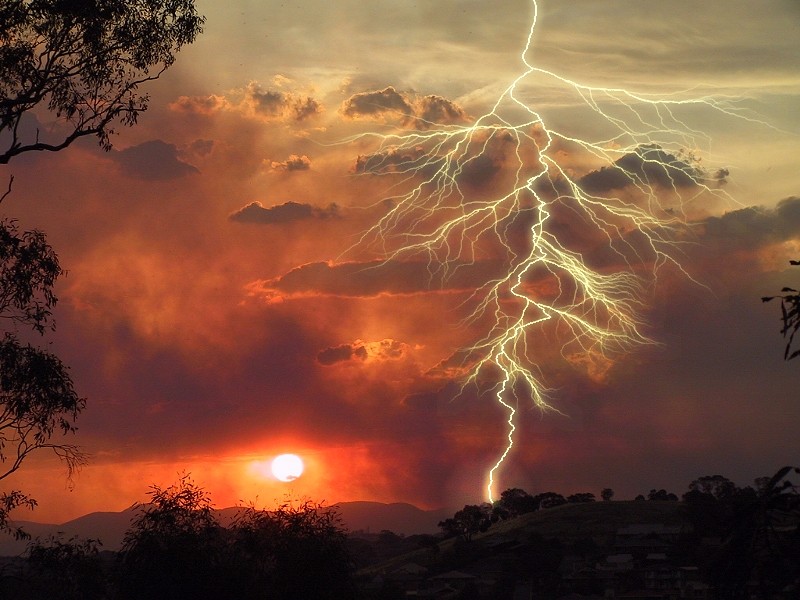 |
nfb 5.4
(fb32) |
PSPS |
Define Public Safety Power Shutoffs (PSPS), and explain their pros and cons. [Hint: see presentation by Mina Deshler , and example of wildfire cameras deployed by power companies (e.g., in the WIFIRE map, select Cameras).] |
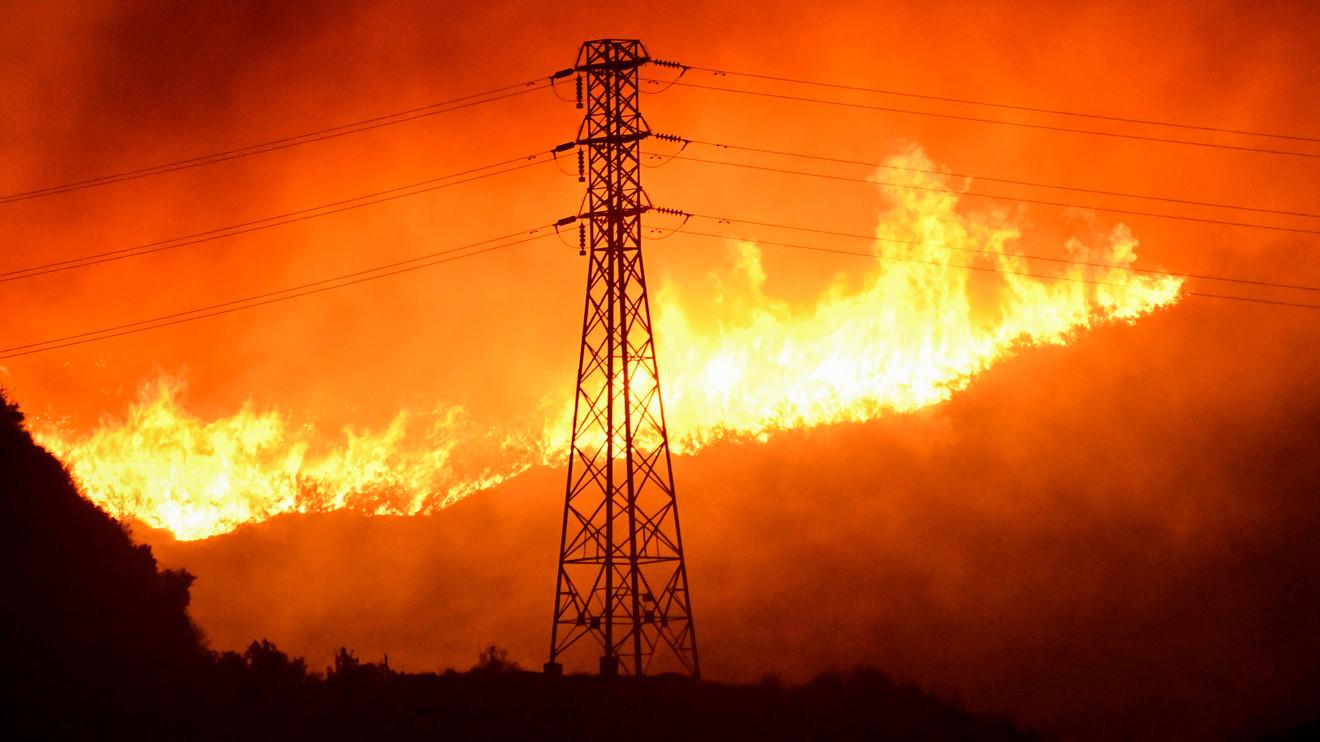 |
nfb 5.5
(fb30) |
Holdover & Zombie Fires |
Explain what a holdover fire is, and what conditions allow it to happen. Explain the factors that allow a holdover fire to re-emerge above ground as a zombie fire. |
 |
| 6. Fire Danger Ratings |
nfb 6.1
(fb5) |
Fire-danger ratings |
Compare and contrast the main components of the Canadian Forest Fire Danger Rating System (CFFDRS), the US National Fire Danger Rating System (NFDRS), and Australia's McArthur Mark 5 Forest Fire Danger Index. |
 |
nfb 6.1b
|
NG-CFFDRS |
List three main differences between the old CFFDRS and the new 2025 Next-Generation Canadian Forest Fire Danger Rating System (NG-CFFDRS). [Hint: see first 7 minutes of this video: https://www.youtube.com/watch?v=8LNpvOEbNAA ]
Ben Hartvigsen (UBC) created a Jupyter notebook for FWI2025, based on the python code provided by NRCan. You can experiment by varying the input parameters and weather to see how the hourly FWI-2025 responds. [Note: UBC students can utilize the following jupyter hub, within which you can open and run the notebook: https://open.jupyter.ubc.ca/ , login with your UBC CWL.] |
 |
nfb 6.2
(fb10) |
Fire Weather Index (FWI) - Overview |
List the 6 main modules of the FWI, and describe an general terms what each module does. |
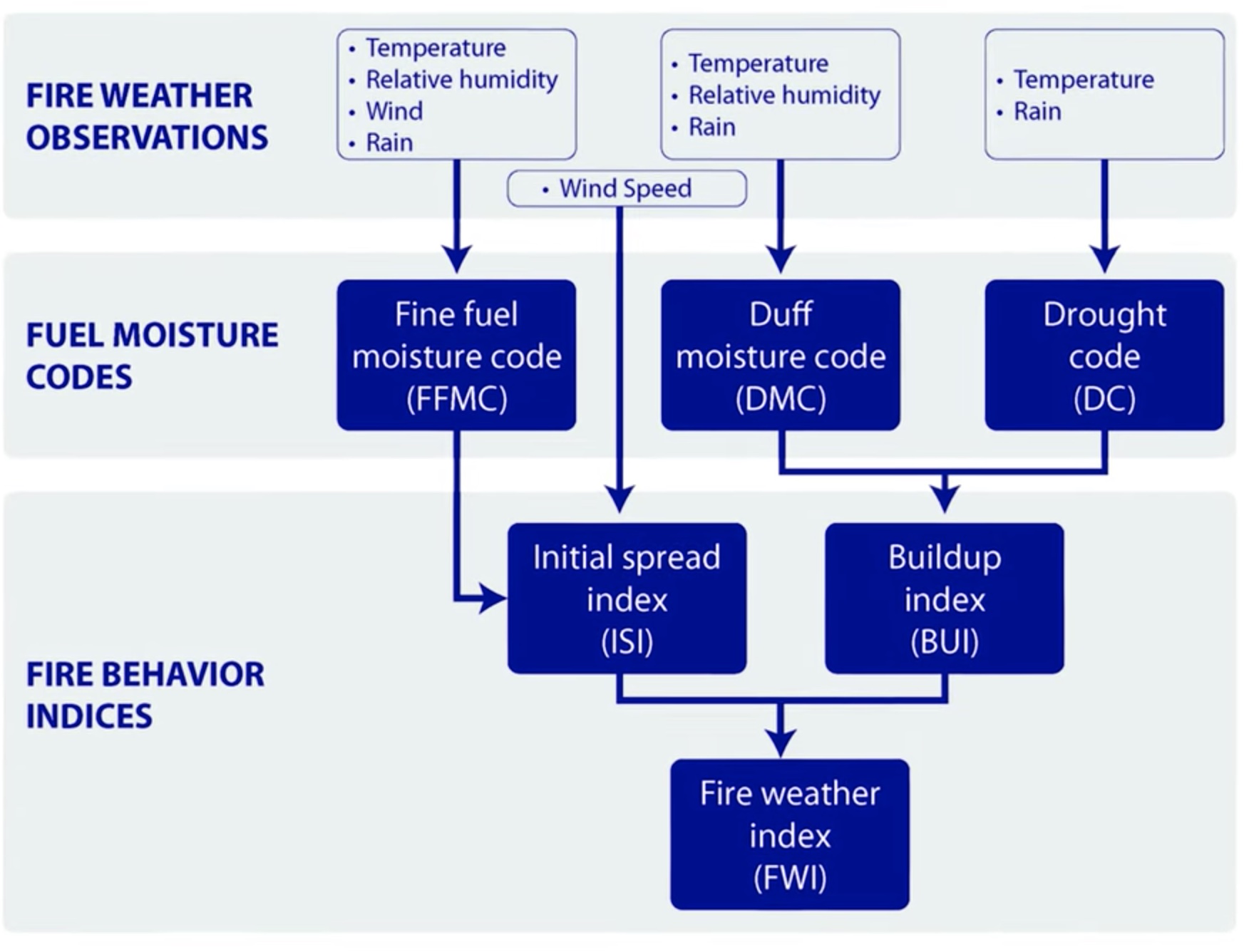 |
nfb 6.2b
|
NG-FWI |
List components of the Next Generation FWI that are different or new relative to the old FWI system. [Hint: start at time 7:20 of this video: https://www.youtube.com/watch?v=8LNpvOEbNAA ] |
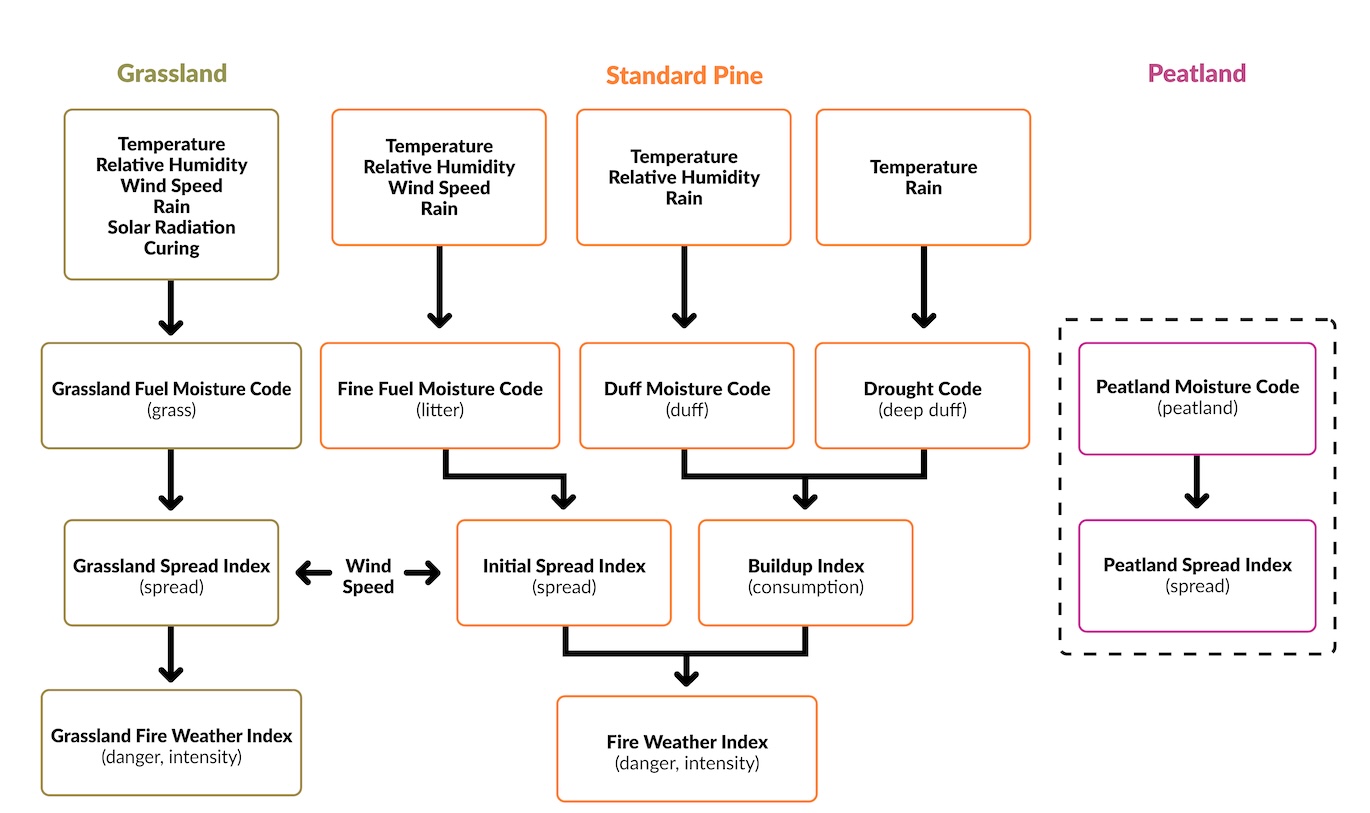 |
nfb 6.3
(fb11) |
FWI details - part 1: Moisture Codes |
Calculate and use the Fine Fuel Moisture Code (FFMC), Duff Moisture Code (DMC), Drought Code (DC). |
 |
nfb 6.4
(fb14) |
FWI details - Part 2: BUI & ISI |
Use and calculate the Build-Up Index (BUI) and the Initial Spread Index (ISI), and explain their dependencies on weather. |
 |
nfb 6.5
(fb15) |
FWI details - Part 3: FWI & DSR |
Use and calculate the Fire Weather Index (FWI) and the Daily Severity Rating (DSR), and explain their dependencies on weather. |
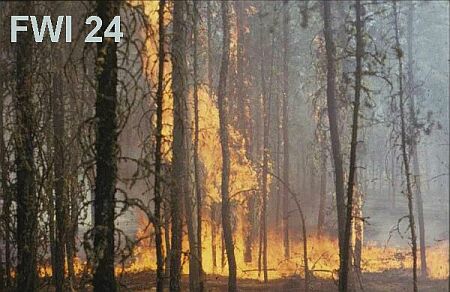 |
| 7. Fire Weather Metrics |
nfb 7.1
(fb25) |
FireWeather |
Relate the real-time weather products on the FireWeather portion of firesmoke.ca to the real-time moisture codes and fire indices. |
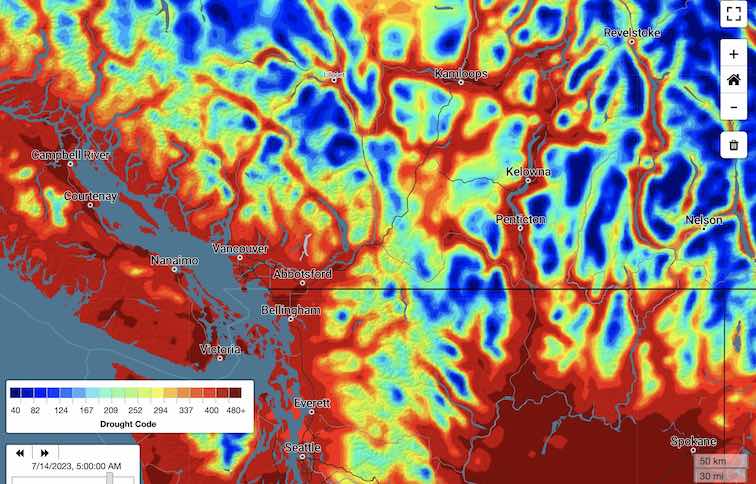 |
nfb 7.2
(fb16) |
Other fire-danger indices |
Use and calculate Vapor Pressure Deficit (VPD) and Hot-Dry-Windy Index (HDWI). Use and calculate the Crossover Index (CI diagram, and the 30-30-30 rule for extreme fire behavior) and the Haines Index, and explain their dependencies on weather. |
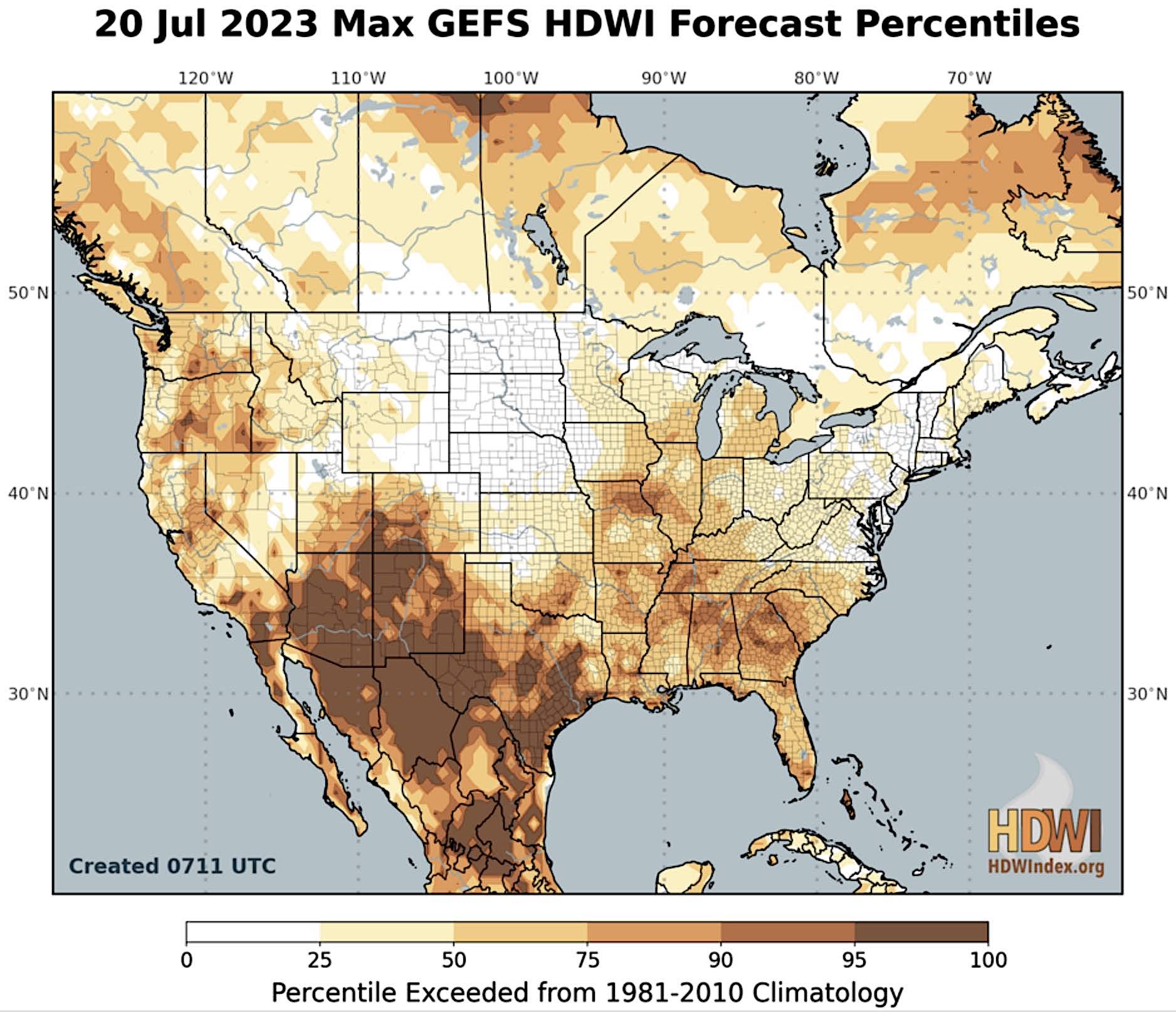 |
| 8. Fire Behavior Prediction (FBP) System |
nfb 8.1
(fb17) |
Fire Behavior Prediction (FBP) system - Overview |
Describe the 5 main types of inputs, and the four primary outputs, of the FBP system, and discuss how they are related to Byram's equation for fire intensity. |
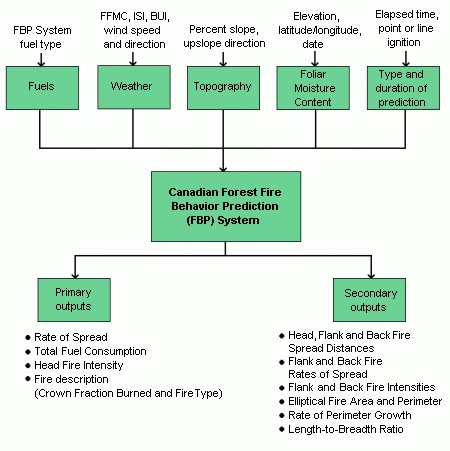 |
nfb 8.2
(fb18) |
Fuel types of the FBP |
Give examples of several of the 16 fuel types of the Canadian Fire Behavior Prediction System, show on a map where those fuels are found. |
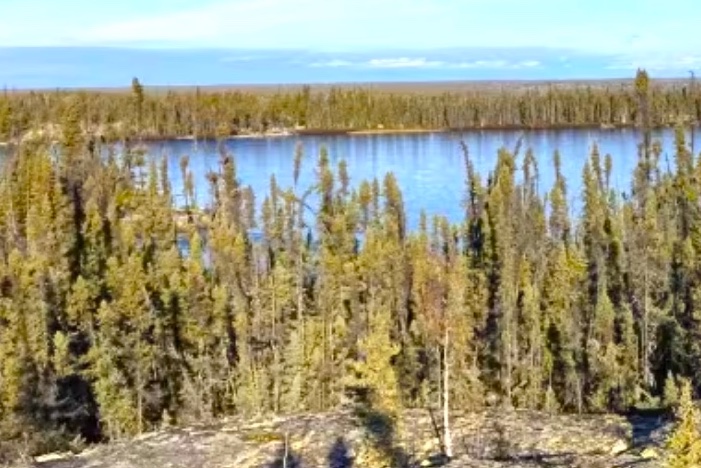 |
nfb 8.3
(fb19) |
FBP - Part 1: ROS |
Explain what weather, fuel, and terrain factors affect the flame-front Rate of Spread (ROS). |
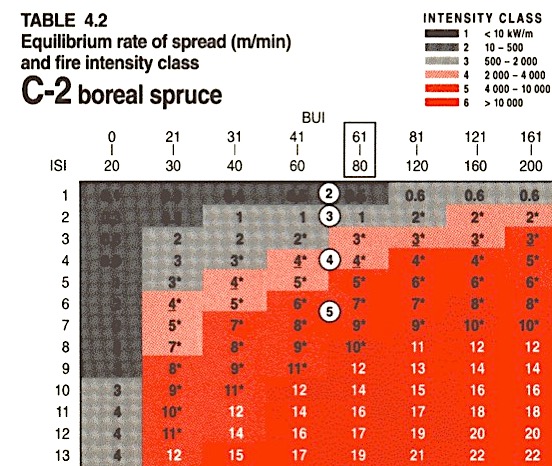 |
nfb 8.4
(fb20) |
FBP - Part 2: HFI |
Use and calculate the Surface Fuel Consumption (SFC), Crown Fraction Burned (CFB), Total Fuel Consumption (TFC), and Head Fire Intensity (HFI), and explain how they relate to fire and weather. |
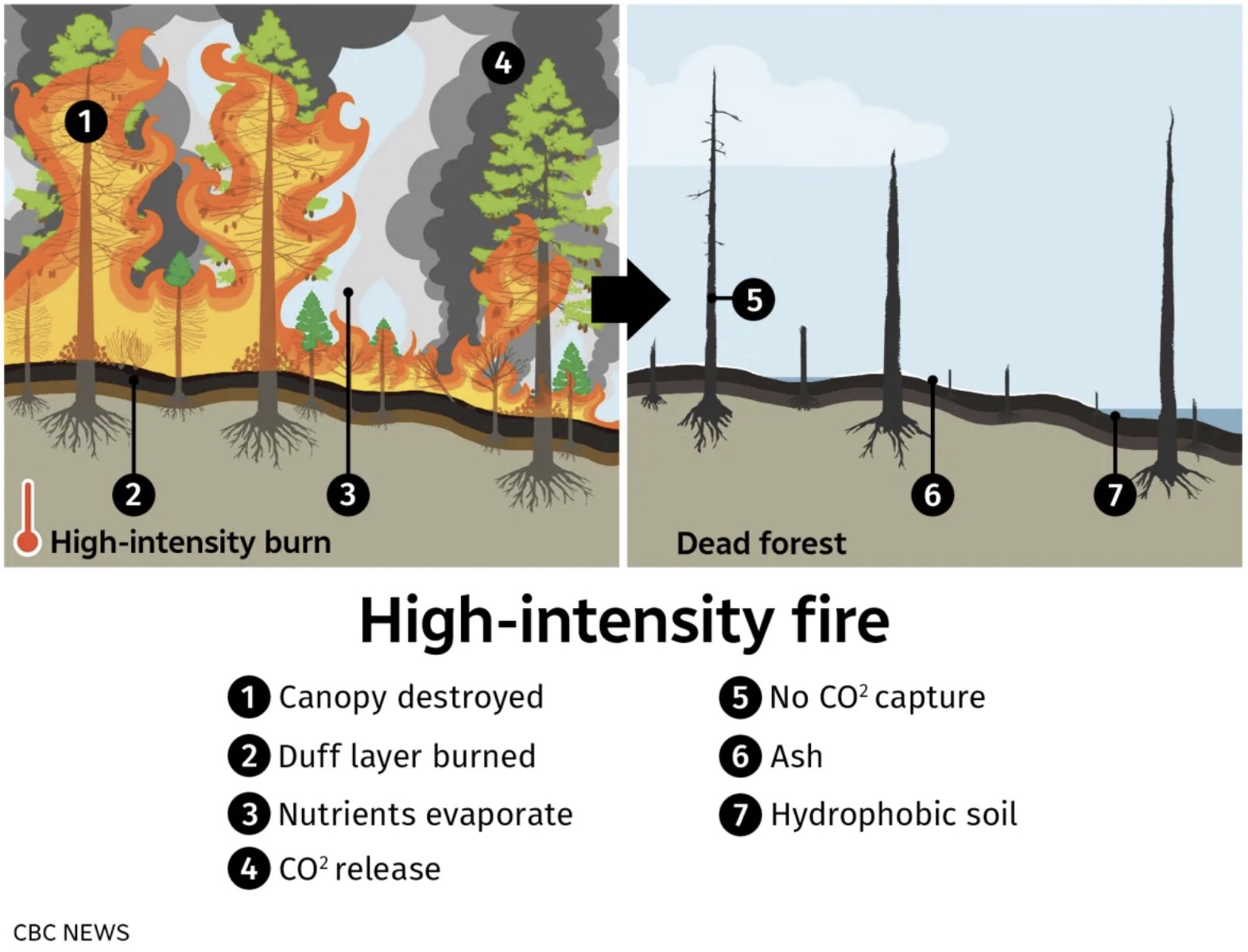 |
nfb 8.5
(fb21) |
FBP - Part 3: Significance |
Relate Head Fire Intensity (HFI) to fire behavior and to tactics for wildfire suppression. |
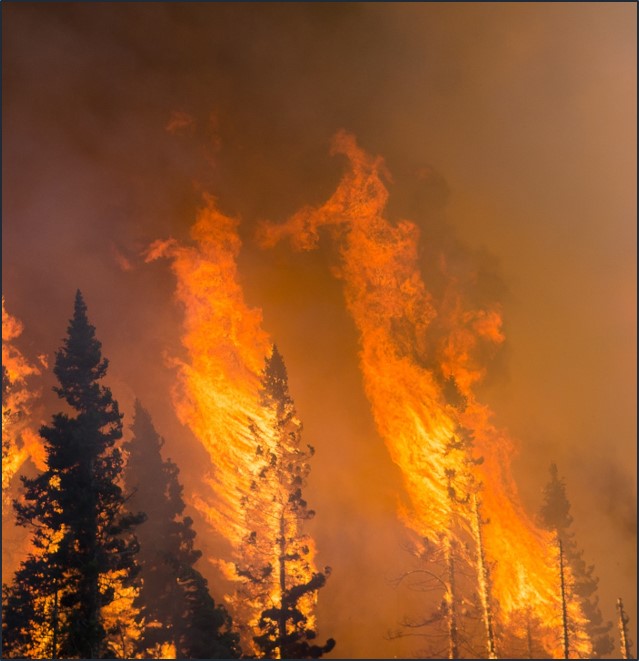 |
| 9. Fire Radiation & Heat Budget |
nfb 9.1
(fb22) |
Fire heat budget |
Describe the physics of terms in the heat-budget equation, and calculate their values. Explain how to estimate fire intensity from satellite observed Fire Radiative Power (FRP). |
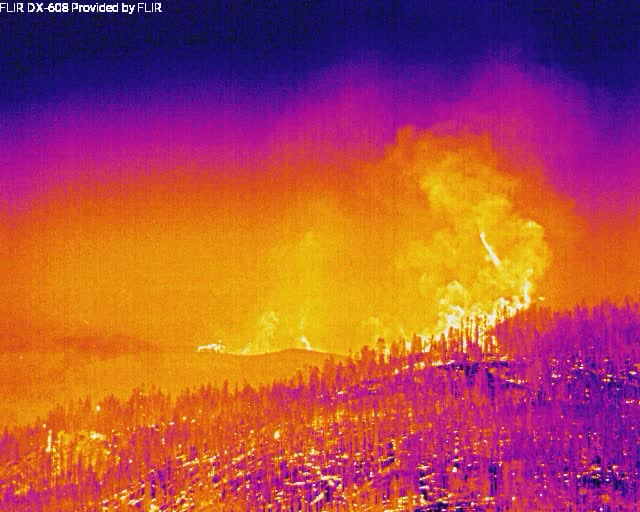 |
| nfb 9.2 |
Fire Radiative Power (FRP) and Fire Radiative Energy (FRE) |
Explain how fire intensity can be estimated via FRP and FRE from satellite (Skim Dong et al 2024: https://ieeexplore.ieee.org/abstract/document/10535216 ), and how it can be predicted (BlueSky fire weather fcsts). |
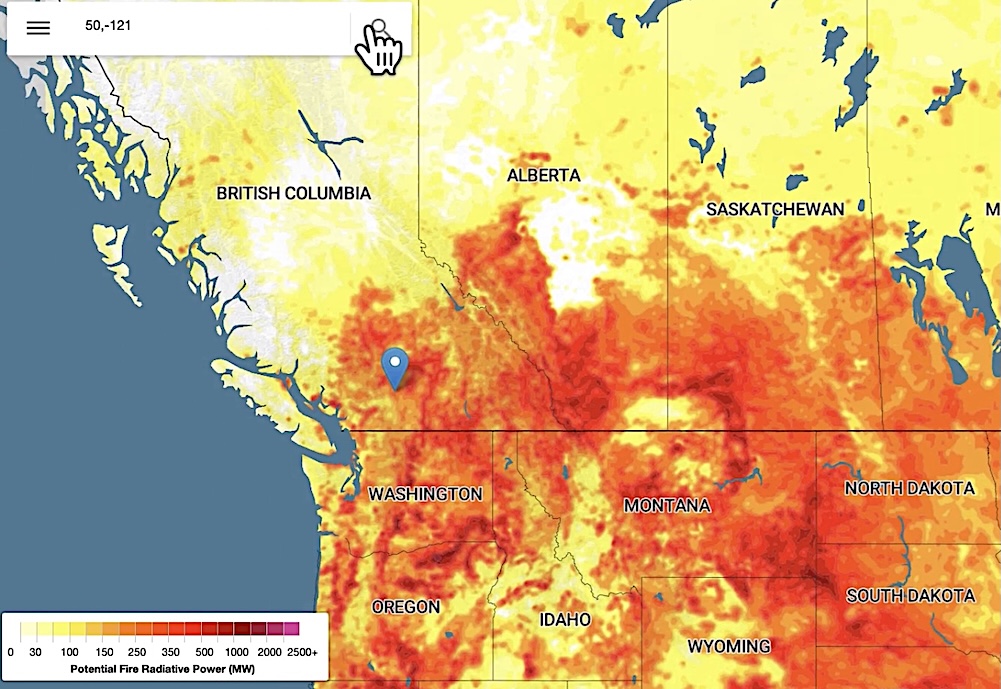 |
| 10. Smoke from Wildfires |
| nfb 10.1 |
Smoke Dispersion |
Explain how wind, turbulence, and atmospheric stability affect the spread (i.e., dispersion) of wildfire smoke. (See details and links in the Met. Concepts tab of this course, section mc06.) |
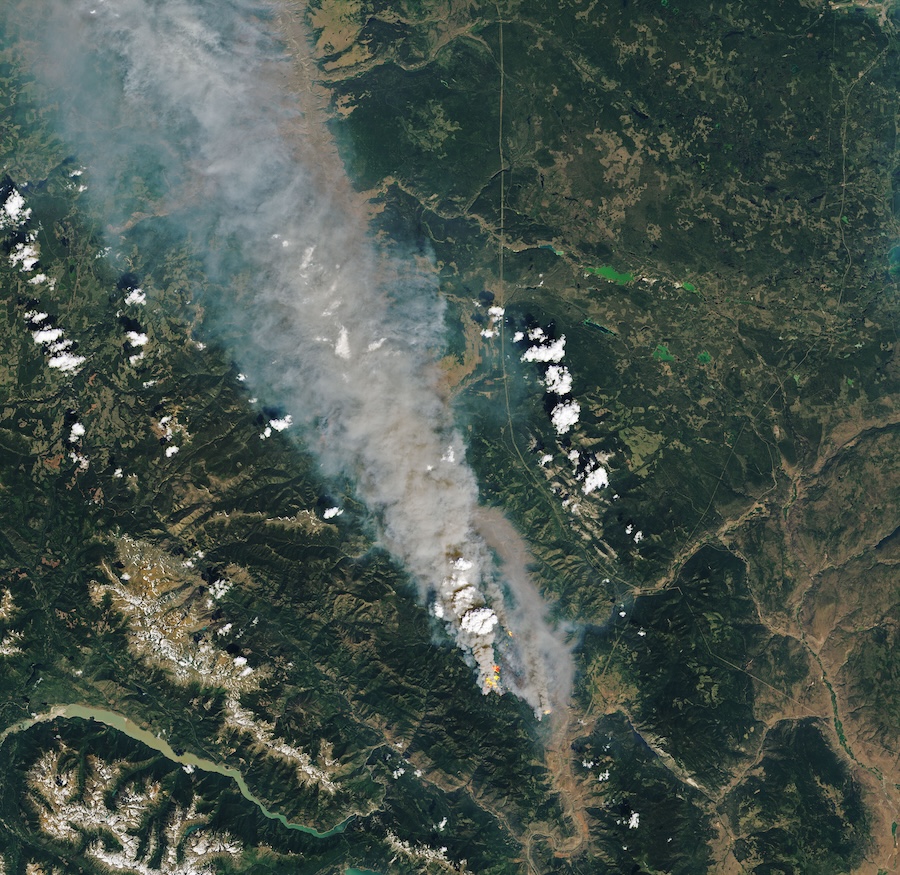 |
| nfb 10.2 |
Plume Rise from Wildfires |
Explain why plume rise is critical for making accurate smoke forecasts at the earth's surface. Compare the factors that affect plume rise from wildfires vs. industrial smoke stacks. (See links in the Smoke tab of this course.) |
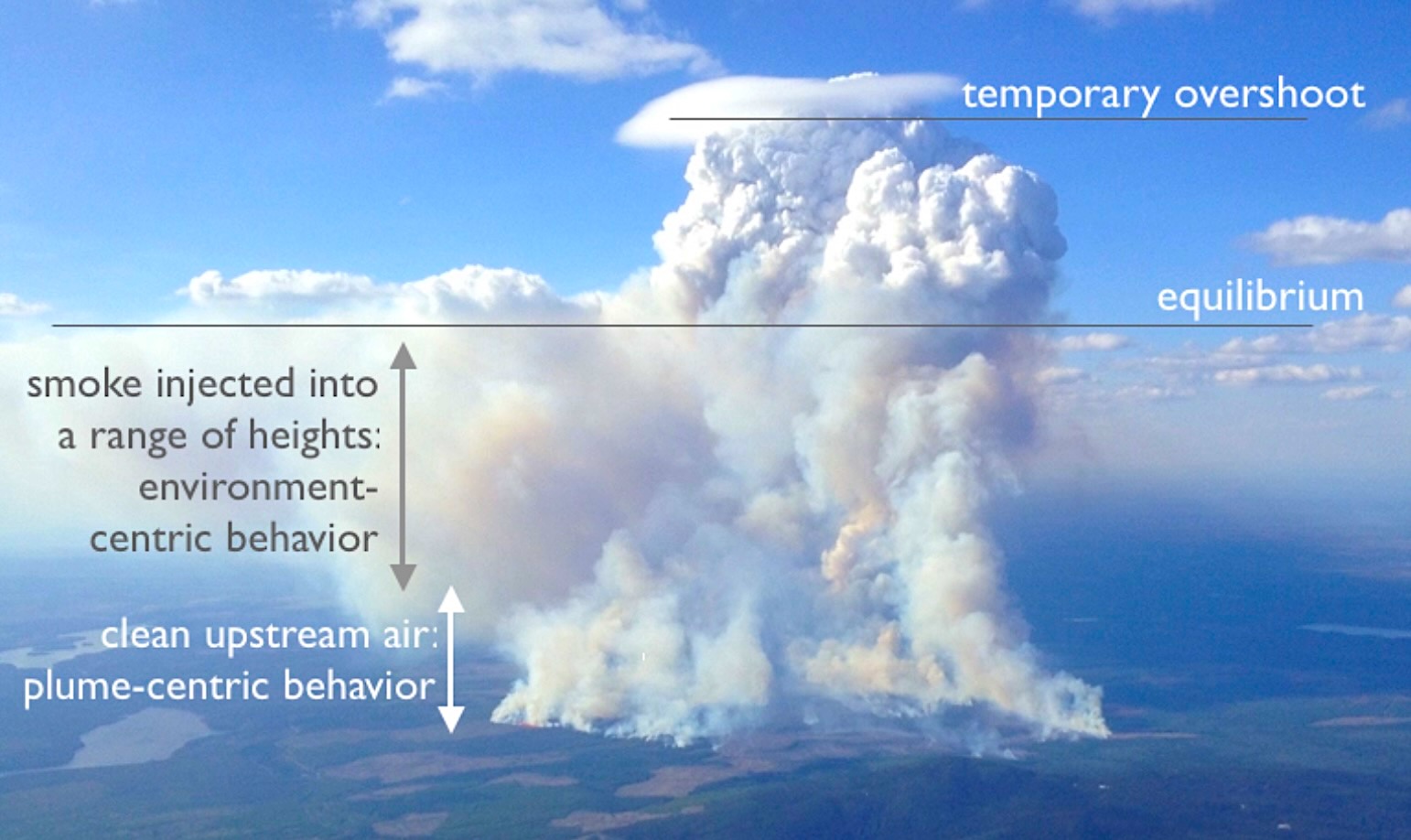 |
| nfb 10.3 |
Operational Wildfire Smoke Models |
Use the BlueSky Canada and ECCC FireWork smoke models, and discuss other wildfire smoke models. (See links in the Smoke tab of this course.) For the BlueSky suite of models, also see this YouTube playlist. |
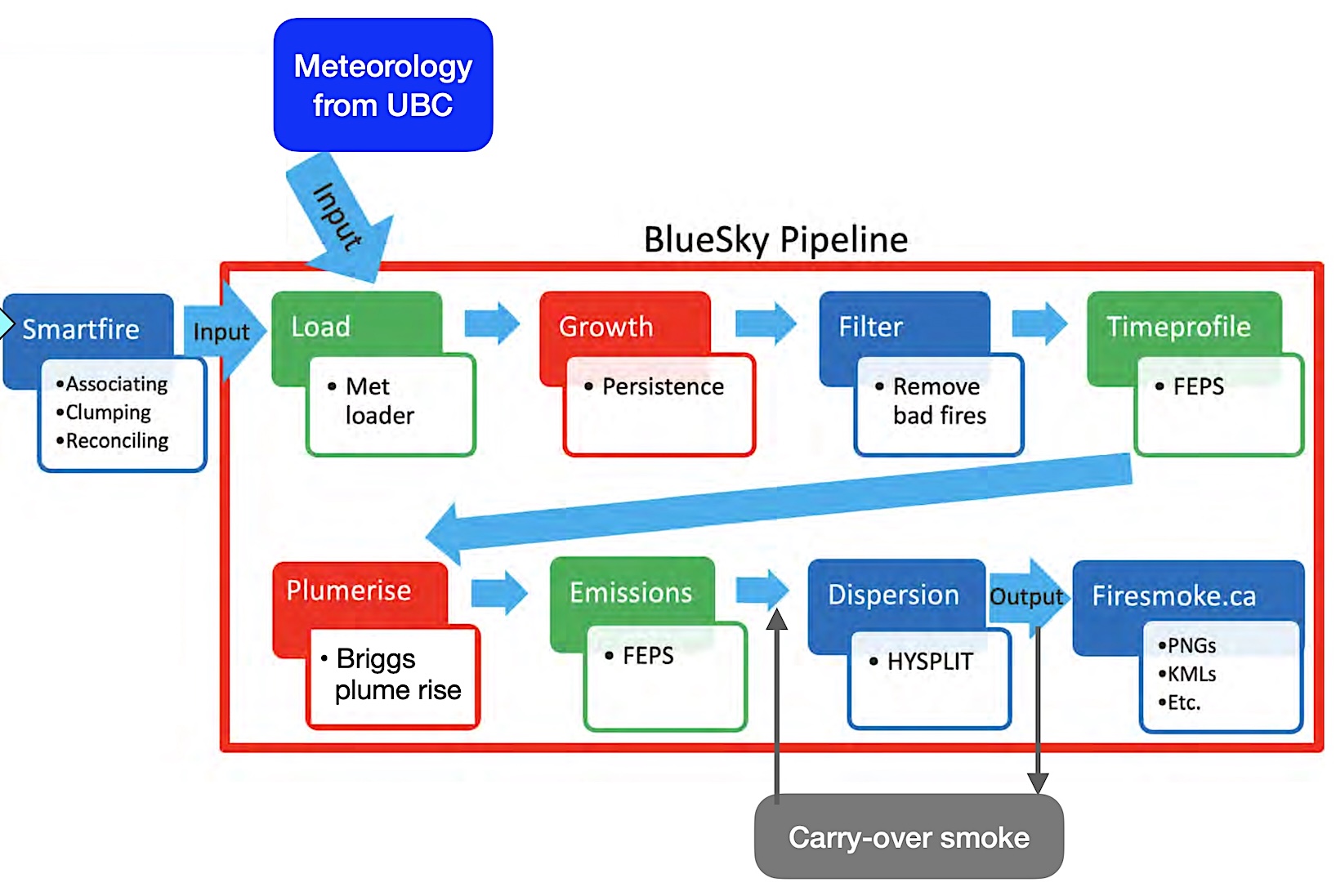 |
| nfb 10.4 |
Health Effects |
Explain the health hazards of very fine Particulate Matter less than 2.5 µm diameter (PM2.5) and other chemicals in wildfire smoke. Access additional resources from the BC Center for Disease Control (bccdc) and a short video by Webber . |
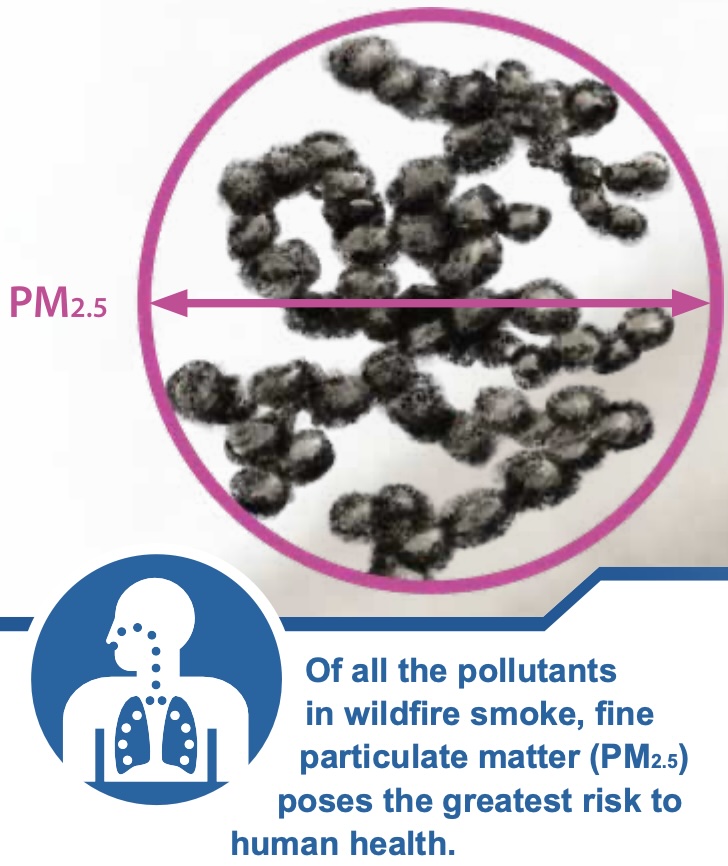 |
| xx |
|
|
|
| xx |
|
|
|

















































